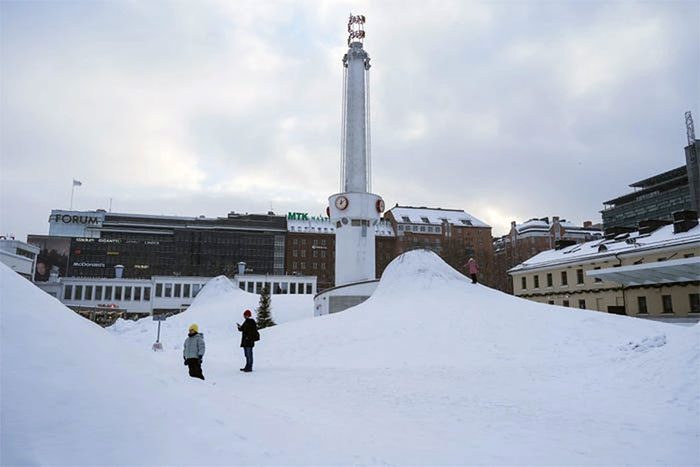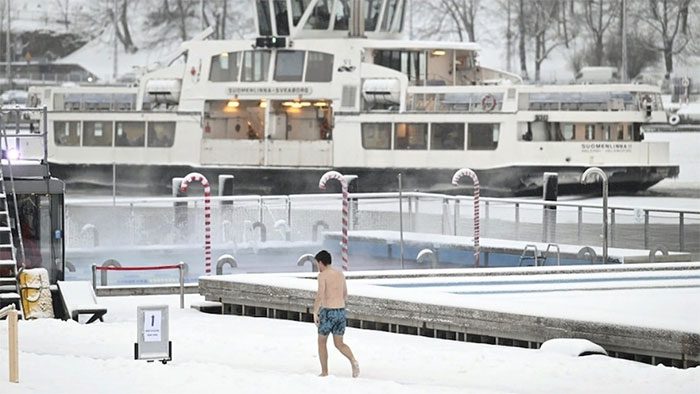The Celsius and Fahrenheit scales differ significantly, yet the current temperature in Finland and Sweden is so low that both values are the same. Can you imagine what minus 40 degrees Celsius feels like?
On January 2nd, Finland and Sweden recorded a record low temperature for the winter, minus 40 degrees Celsius and also minus 40 degrees Fahrenheit, as a cold wave swept across Northern Europe.

Lasipalatsi Square in the capital city of Helsinki, Finland. (Photo: ALESSANDRO RAMPAZZO).
The cold air and snow have disrupted transportation throughout the region. Major highways in southern Norway have been closed, and ferry services have also been affected. The railway system in Sweden has suffered severely due to this cold snap.
The recorded temperature in the small village of Nikkaluokta, home to the Sami people in northern Sweden, was minus 41.6 degrees Celsius. Climate scientist Nils Holmqvist, who works for the Swedish television channel SVT, indicated that this is the lowest temperature recorded this winter, and forecasts suggest that it will remain very cold in the northern region.
According to the Swedish Meteorological and Hydrological Institute, some areas in northern Sweden are currently at minus 30 degrees Celsius and are warning residents to be cautious due to snowfall and cold winds in the central and southern parts of the country.
In the neighboring country of Finland, a record low temperature was noted in the town of Ylivieska in the northwest of the country. The temperature there on the past Tuesday was minus 37.8 degrees Celsius, and weather forecasts indicate that some areas nationwide will experience temperatures lower than minus 40 degrees Celsius this week. The capital Helsinki is expected to be cold, ranging from minus 15 degrees Celsius to minus 20 degrees Celsius.

A man walking past the Allas Sea Pool in southern Helsinki, Finland, on Tuesday, January 2nd. (Photo: Vesa Moilanen/Lehtikuva).
The city government of Arendal in southern Norway decided to close schools on Wednesday due to the inability to clear roads for children to get to school after the New Year’s holiday.
Several ferry services across Northern Europe have also ceased operations, including the ferry route from southern Norway to Denmark, as the main bridge does not allow light vehicles with trailers to cross in strong winds.




















































